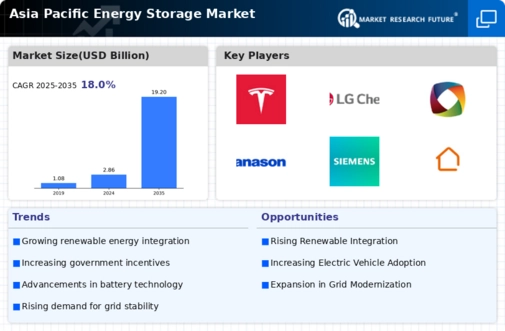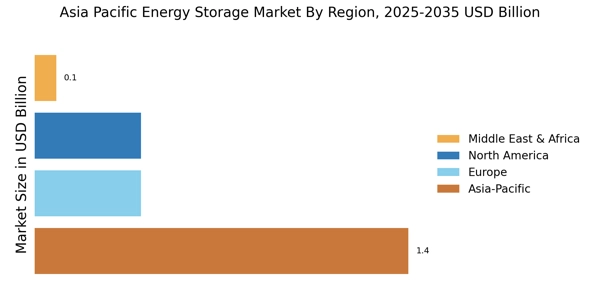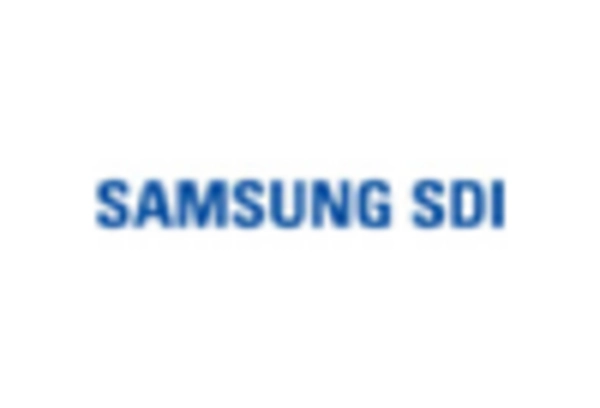China : Unmatched Growth and Innovation
China holds a staggering 45.5% market share in the APAC energy storage sector, valued at $6,500.0 million. Key growth drivers include rapid industrialization, government incentives for renewable energy, and a strong push towards electric vehicles (EVs). The Chinese government has implemented policies such as the 14th Five-Year Plan, which emphasizes energy storage as a critical component of energy transition. Infrastructure development, particularly in urban areas, supports increasing demand for energy storage solutions.
India : Rapid Growth and Investment Opportunities
India commands a 17.5% market share, valued at $3,500.0 million, driven by increasing energy demands and government initiatives like the National Energy Storage Mission. The country is witnessing a surge in renewable energy projects, particularly solar, which fuels the demand for energy storage systems. Regulatory frameworks are evolving to support private investments and enhance grid stability, making energy storage a vital component of India's energy strategy.
Japan : Focus on Sustainability and Technology
Japan holds a 12.5% market share, valued at $2,500.0 million, with a strong emphasis on technological innovation and sustainability. The government promotes energy storage through subsidies and research grants, particularly in the wake of the Fukushima disaster. Demand is driven by residential energy storage systems and industrial applications, with a focus on enhancing energy resilience and efficiency in urban areas.
South Korea : Strong Industrial Base and R&D
South Korea captures a 10% market share, valued at $2,000.0 million, bolstered by its advanced technology sector and significant investments in R&D. The government supports energy storage through initiatives like the Green New Deal, which aims to increase renewable energy adoption. Major cities like Seoul and Busan are key markets, with a growing demand for energy storage in both residential and commercial sectors.
Malaysia : Strategic Location and Development
Malaysia accounts for a 3.8% market share, valued at $800.0 million, with growth driven by increasing energy consumption and government policies promoting renewable energy. The Malaysian government has introduced incentives for energy storage systems, particularly in industrial applications. Key markets include Kuala Lumpur and Penang, where local players are emerging alongside international giants like LG Chem and Samsung SDI.
Thailand : Government Support and Investment
Thailand holds a 2.5% market share, valued at $600.0 million, with significant growth potential driven by government initiatives like the Power Development Plan. The country is focusing on renewable energy integration, which boosts demand for energy storage solutions. Key markets include Bangkok and Chiang Mai, where local and international players are competing to capture market share in both residential and commercial sectors.
Indonesia : Emerging Market with Opportunities
Indonesia also holds a 2.5% market share, valued at $600.0 million, with growth driven by increasing energy needs and a push for renewable energy sources. The government is exploring policies to enhance energy storage adoption, particularly in remote areas. Key markets include Jakarta and Surabaya, where local companies are beginning to collaborate with international firms to develop energy storage solutions.
Rest of APAC : Varied Markets and Applications
The Rest of APAC region accounts for a 7.5% market share, valued at $1,640.52 million, with diverse opportunities across various countries. Growth is driven by increasing energy demands and government policies promoting renewable energy. Countries like Vietnam and the Philippines are emerging markets, with local players and international companies vying for market share in energy storage solutions tailored to specific regional needs.


















Leave a Comment